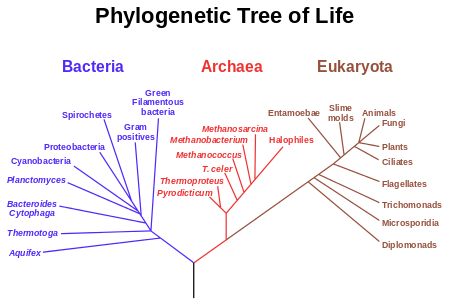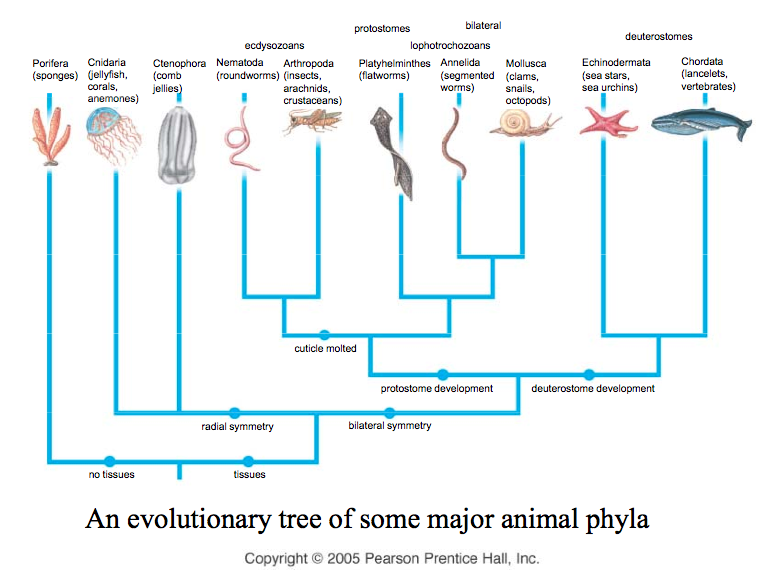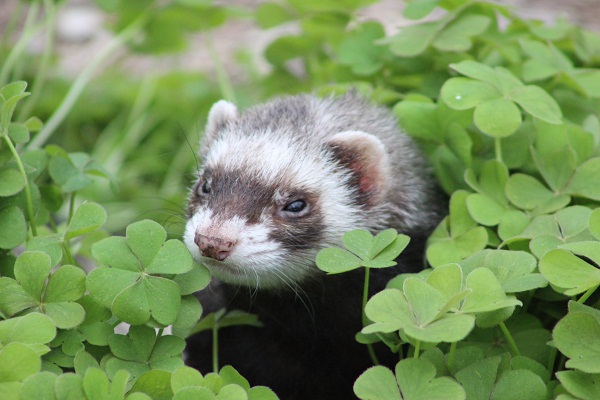Classification
Domain: Eukaryota
Kingdom: Animalia

Phylum: Chordata
Class: Mammalia
Order: Carnivora
Family: Mustelidae
Genus: Mustela
Species: Mustela putorius furo
(Encyclopedia of Life, 2013)
Domain- According to rRNA sequences, all life is grouped within three
domains: Bacteria and Archaea, also known as the prokaryotes, and the
Eukaryotes. The prokaryotes and Eukaryotes are separated by a number of
things, one example being the presence of a nucleus. The ferret is
multicellular and its cells have a nucleus. It also possess true
organelles within membranes, such as the mitochondria and Golgi
apparatus. Another example of a Eukaryote is the
Humboldt
Squid (Encyclopedia of Life, 2013).
Kingdom: The ferret is classified as an animal because it is motile,
heterotrophic, multicellular, lacks a rigid cell walls, and its embryo
passes through a blastula phase. Other examples of organisms
within this kingdom are cats, dogs, sponges, and even the HUGE
Paraceratherium (Encyclopedia of Life, 2013).

Phylum: Chordata includes vertebrates such as mammals, fish, and
reptiles. Mustela putorius furo is a vertebrate that is bilateral and
symmetric with a head differentiated from the trunk and tail. Other
common structures of chordates include the notochord, and nerve cord
(Tree of Life, 2004).
Class: Organisms that possess mammary glands that produce milk and have
hair sometime within their life are classified as mammals. The ferret
has hair, mammary glands, and is warm-blooded which is common of most
mammals (Tree of Life, 2004).
Order: Most Carnivora have meat based diet although there are some that
are omnivorous such as the giant panda. Other characteristics of the
carnivore are teeth, claws, and binocular vision. Other animals within
this order include: tigers, the Red Fox (Vulpes
vulpes), and bears (Encyclopedia of Life,
2013).
Family: Members of the Mustelidae family include: badgers, otters,
weasels, skunks, and many more relatives of the ferret. Mustelidae is
the largest family in the Carnivora order. Common characteristics of
animals in this family are short legs, thick fur, nocturnal, and all but
the sea otter have anal scent glands used for signaling mates and
marking territory (Encyclopedia of Life, 2013).
Genus: Mustela is the genus that includes weasels, European polecats,
stoats, ferrets, and European minks. Ferrets can be classified as a
member of the Mustela genus by their long slender bodies, short legs,
and the fact they are active predators (Animal Classification, 2008).

Species: The ferret, Mustela putorius furo, has a long slender body
usually 20 inches long including a 5 inch tail, brown, black, or white
hair, with an average life span of approximately 8 years. Mustela is
Latin for weasel, putorius=smelly, and furo =thief. Therefore our ferret
is a weasel that is a smelly thief (Merriam-Webster Dictionary, 2014).
Learn more about the Habitat of the ferret!